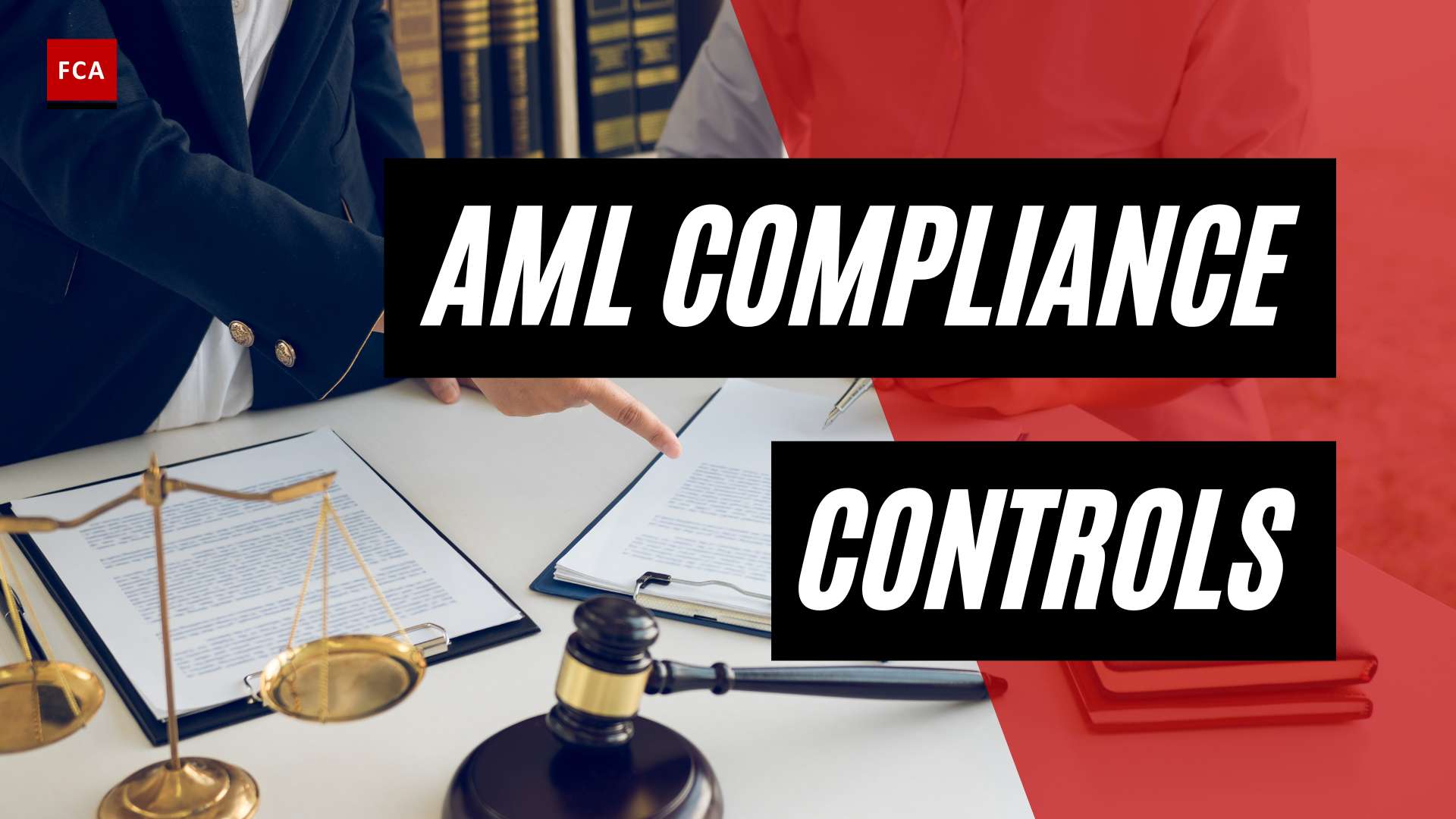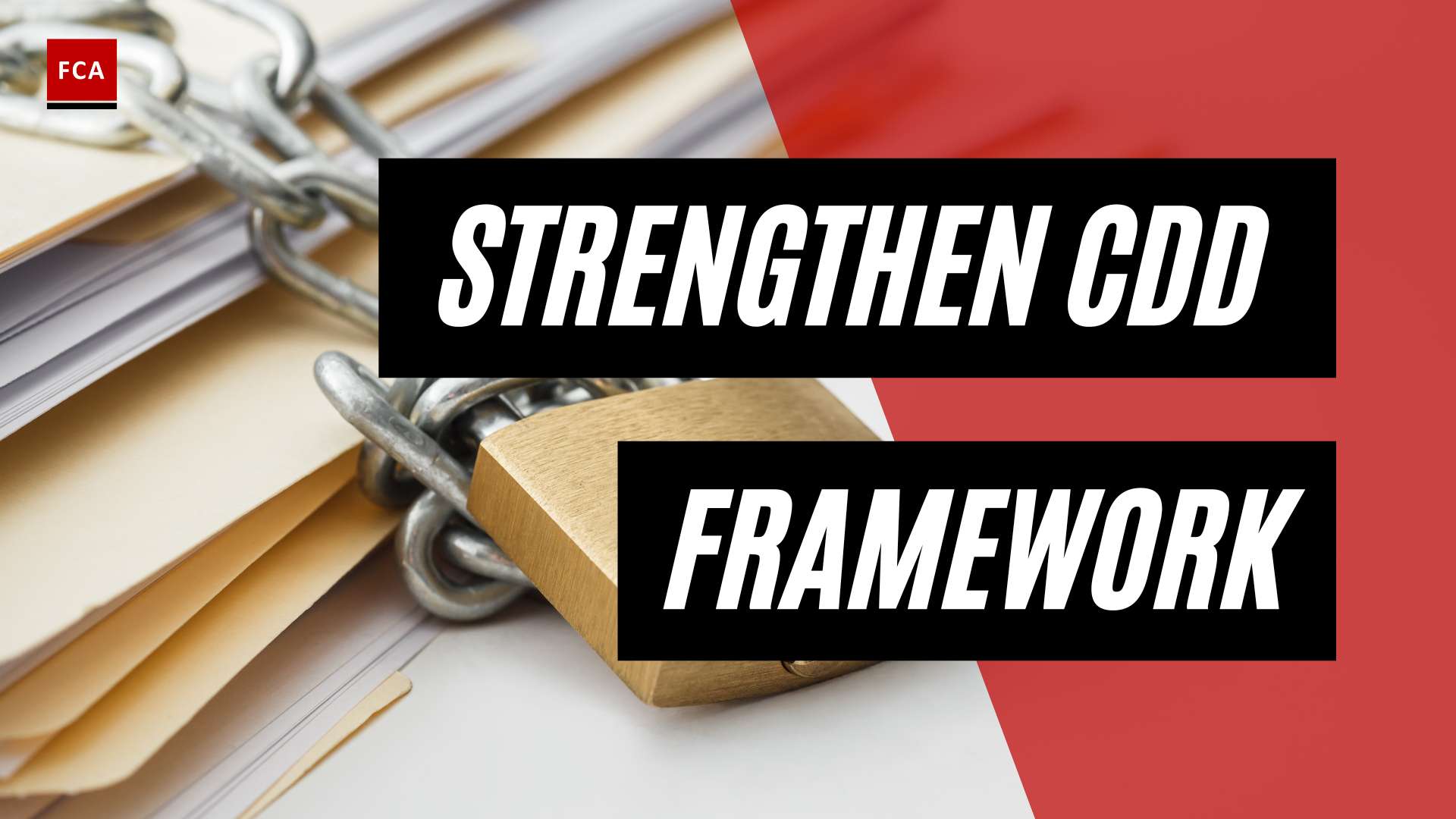Understanding Money Laundering in Real Estate
Money laundering is the process criminals use to disguise the illegal origin of their funds. It involves introducing the illegal proceeds into the financial system, distancing the funds from their source through layers of financial transactions, and returning the funds to the criminal from what appears to be a legitimate source. Real estate transactions can be used in any one of the three stages of money laundering: placement, layering, and integration. For example, purchasing a home with illegal funds as part of the down payment would be considered integration (source).
The involvement of real estate in money laundering is a significant concern. Criminals may use real estate transactions to legitimize their illicit proceeds, taking advantage of the size and liquidity of the real estate market. The complexity and large sums of money involved in these transactions can make it challenging to detect and prevent money laundering activities (Financial Crime Academy).
To effectively combat money laundering in real estate, it is essential to identify the red flags that may indicate potentially suspicious activities. These red flags can be categorized into three main areas: geographic risk factors, customer risk factors, and transaction risk factors. Geographic risk factors involve areas with weak anti-money laundering (AML) regimes or a history of political corruption. Customer risk factors include unusual involvement of third parties or high-ranking foreign political officials. Transaction risk factors encompass under or over-valued properties and the use of large amounts of cash (source).
Real estate professionals play a crucial role in identifying and reporting suspicious activities. Implementing robust customer due diligence (CDD) measures is essential in detecting potential money laundering activities. By conducting thorough CDD checks, real estate professionals can verify the identities of buyers and sellers, determine beneficial ownership, and understand the source of funds being used in the transaction. Failure to carry out proper CDD checks can expose real estate professionals to significant legal and reputational risks.
When confronted with suspicious activity, real estate agents have the option to report the information to local law enforcement or file a Suspicious Activity Report (SAR) with the U.S. Treasury’s Financial Crimes Enforcement Network (FinCEN). While filing a SAR is not mandatory for real estate professionals, it is advisable to consult with an attorney before doing so to avoid potential civil liability.
To enhance AML compliance in the real estate sector, technology solutions can be utilized. Data analytics and artificial intelligence (AI) play a vital role in identifying suspicious patterns and behaviors. Automated transaction monitoring systems can help detect and alert real estate professionals to potentially suspicious activities, improving overall AML effectiveness (source).
Understanding the significance of beneficial ownership is another critical aspect of AML compliance in real estate. Beneficial ownership refers to identifying and verifying the individuals or entities that control and benefit from a property, even if their names are not directly associated with it. Criminals often use complex ownership structures to hide illicit wealth, making it essential to uncover the true beneficial owners of properties (First AML).
To ensure compliance with AML regulations in the real estate industry, regulatory measures have been implemented globally. These regulations aim to prevent money laundering and terrorist financing by imposing strict obligations on real estate professionals and entities involved in real estate transactions. Non-compliance with AML regulations can result in severe consequences, including hefty fines and reputational damage (Financial Crime Academy).
By understanding the process of money laundering and the involvement of real estate in such activities, real estate professionals can identify potential red flags, implement robust customer due diligence practices, and utilize technology solutions to enhance AML compliance. The vigilance of the real estate industry is crucial in combating money laundering and maintaining the integrity of real estate transactions.
Red Flags for Money Laundering in Real Estate
To effectively combat money laundering in the real estate sector, it is crucial for professionals to be vigilant and recognize the red flags that may indicate potential illicit activities. These red flags can be categorized into three main areas: geographic risk factors, customer risk factors, and transaction risk factors.
Geographic Risk Factors
Geographic risk factors refer to characteristics associated with specific regions or countries that may pose a higher risk of money laundering activities in real estate transactions. These factors include:
- Weak Anti-Money Laundering (AML) Regime: Regions with inadequate or ineffective AML regulations and enforcement mechanisms are more susceptible to money laundering. In such areas, criminals may exploit loopholes and lax oversight to launder illicit funds through real estate transactions.
- Political Corruption: Areas with a history of political corruption or lack of transparency in government can provide an environment conducive to money laundering in real estate. Corrupt officials may facilitate illicit transactions or turn a blind eye to suspicious activities.
It is important for real estate professionals to remain cautious when dealing with transactions involving high-risk geographic locations. Conducting thorough AML risk assessments to identify and mitigate potential risks is crucial in these scenarios.
Customer Risk Factors
Customer risk factors involve indicators related to the individuals or entities involved in real estate transactions that may raise suspicions of money laundering. These factors include:
- Unusual Involvement of Third Parties: Transactions involving multiple layers of intermediaries or complex company structures can be indicative of attempts to obscure the true beneficial owner and launder illicit funds through the purchase or sale of real estate.
- High-Ranking Foreign Political Officials: Real estate transactions involving high-ranking foreign political officials may be associated with corruption or attempts to hide the proceeds of illicit activities. Such involvement should be carefully scrutinized.
Real estate professionals should exercise due diligence and conduct customer due diligence to verify the identities of all parties involved in a transaction, especially when red flags are present.
Transaction Risk Factors
Transaction risk factors encompass characteristics of the real estate transaction itself that may indicate potential money laundering activities. These factors include:
- Under or Over-Valued Properties: Transactions involving properties that are significantly undervalued or overvalued without a clear reason can be a sign of price manipulation. This manipulation may be an attempt to facilitate illicit cash transactions or launder larger sums of money through mortgages.
- Use of Large Amounts of Cash: Real estate transactions involving large amounts of physical cash, particularly without a proper paper trail or legitimate explanation, should raise suspicions. Cash transactions can enable money launderers to disguise the origin of funds and avoid detection.
- Unusual Purchase Structures: Complex or unconventional purchase structures, such as transactions between related parties or involving offshore entities, may be used to obscure the true nature of the transaction and launder illicit funds.
Real estate professionals should be aware of these transaction-related red flags and ensure they have robust AML compliance measures in place to detect and report suspicious activities.
By understanding and being alert to these red flags, professionals in the real estate industry can play a vital role in combatting money laundering and ensuring the integrity of the real estate market. It is essential to stay updated on AML regulations and take appropriate steps to mitigate the risks associated with money laundering in real estate transactions.
Customer Due Diligence in Real Estate Transactions
When it comes to combating money laundering in real estate transactions, implementing effective customer due diligence (CDD) measures is of paramount importance. Real estate professionals should exercise sound judgment and apply increased levels of CDD when one or more red flags are present. This ensures that the identities of the parties involved, the source of funds, and the purpose of the transaction are properly verified.
Importance of Customer Due Diligence
Customer due diligence is a fundamental element in AML compliance for real estate professionals. It involves conducting thorough checks on both buyers and sellers to verify their identities, beneficial owners, and the source of funds being used in the transaction. By implementing robust CDD procedures, real estate professionals can mitigate the risk of inadvertently facilitating money laundering activities and protect themselves from legal and reputational risks.
The main objectives of customer due diligence in real estate transactions include:
-
Identity Verification: Confirming the true identity of the customer is crucial to prevent impersonation and identity fraud. This involves obtaining reliable and independent documentation, such as government-issued identification, and verifying the information against credible sources.
-
Beneficial Ownership Identification: Identifying and verifying the individuals or entities that control and benefit from a property, even if their names are not directly associated with it, is a critical component of AML compliance in the real estate sector. This helps uncover complex ownership structures used by criminals to hide illicit wealth.
-
Source of Funds Verification: Verifying the legitimacy of the funds being used in a real estate transaction is essential to detect and prevent money laundering. Real estate professionals should obtain comprehensive information about the source of funds, ensuring they are derived from legitimate sources and not linked to criminal activities.
-
Risk Assessment: Assessing the risk associated with a particular customer and transaction is an integral part of CDD. Real estate professionals should consider factors such as the jurisdiction involved, the nature of the customer’s business, and any previous suspicious activities or legal issues.
Enhanced Levels of Due Diligence
In certain circumstances, enhanced levels of due diligence may be necessary to address higher risks associated with specific customers or transactions. The decision to apply enhanced due diligence should be based on a risk-based approach, considering factors such as the customer’s profile, the nature and location of the property, and the complexity of the transaction.
Enhanced due diligence measures may include:
-
Obtaining Additional Information: Real estate professionals may need to gather additional information to supplement the standard due diligence checks. This could involve seeking additional documentation, conducting interviews with the customer, or consulting external sources to verify the information provided.
-
Identifying Ultimate Beneficial Owners: In cases involving complex ownership structures or entities, real estate professionals should take measures to identify who controls or owns a legal entity involved in the transaction. This requires understanding the ownership and control structure of the entity and confirming the identity of the ultimate beneficial owners.
-
Monitoring Ongoing Relationships: Regularly reviewing and updating customer information throughout the course of the relationship is essential to identify any changes that may raise suspicions. This includes monitoring transactions, assessing the consistency of the customer’s activities, and promptly investigating any unusual or suspicious behavior.
By implementing robust customer due diligence procedures and applying enhanced levels of due diligence when necessary, real estate professionals can play a crucial role in preventing money laundering in the real estate sector. These measures not only help protect against illicit activities but also contribute to maintaining the integrity and transparency of real estate transactions.
Reporting Suspicious Activity in Real Estate
In the fight against money laundering in real estate, it is crucial for professionals in the industry to be aware of and report any suspicious activity they encounter. Reporting suspicious activity is an essential step in combating money laundering and ensuring the integrity of real estate transactions. There are several options available for reporting suspicious activity, including filing a Suspicious Activity Report (SAR).
Options for Reporting Suspicious Activity
Real estate professionals have several avenues for reporting suspicious activity. They can choose to report the activity to local law enforcement or the Federal Bureau of Investigation (FBI). These channels allow professionals to provide information regarding potentially illicit transactions and activities.
Additionally, professionals in the real estate industry may consider filing a Suspicious Activity Report (SAR) with the U.S. Treasury’s Financial Crimes Enforcement Network (FinCEN) (source). While not mandatory, SARs play a crucial role in detecting and preventing money laundering in the real estate sector. SARs provide a mechanism for real estate professionals to report suspicious transactions and share relevant information with law enforcement agencies.
It is important for real estate professionals to exercise sound judgment and consult with an attorney before filing a SAR to ensure compliance with regulations and avoid potential civil liability (source). By reporting suspicious activity through appropriate channels, professionals contribute to the collective effort of combating money laundering and protecting the integrity of the real estate industry.
Filing a Suspicious Activity Report (SAR)
To file a Suspicious Activity Report (SAR), real estate professionals can utilize the U.S. Treasury’s Financial Crimes Enforcement Network (FinCEN). FinCEN provides a platform for submitting SARs, allowing professionals to provide detailed information about suspicious transactions and related parties. SARs help authorities identify potential money laundering activities and take appropriate action to investigate and combat illicit financial activities.
When filing a SAR, real estate professionals should provide as much relevant information as possible, including details about the suspicious transaction, the parties involved, and any additional supporting documentation. The accuracy and completeness of the information are crucial to ensure effective analysis and investigation by law enforcement agencies.
By actively participating in reporting suspicious activity, real estate professionals contribute to the overall efforts to prevent money laundering and maintain the integrity of the real estate industry. It is through the collective vigilance and cooperation of professionals that the fight against money laundering can be strengthened.
In the next section, we will explore the role of technology solutions, such as data analytics and AI, in enhancing anti-money laundering compliance in the real estate sector. Stay tuned to learn more about the latest advancements in AML technology solutions.
Technology Solutions for AML Compliance in Real Estate
As the fight against money laundering in the real estate industry intensifies, technology solutions have emerged as valuable tools to enhance Anti-Money Laundering (AML) compliance efforts. These solutions leverage data analytics, artificial intelligence (AI), and automation to detect and prevent suspicious activities. Two key technology solutions in this realm are data analytics and AI, as well as automated transaction monitoring systems.
Role of Data Analytics and AI
Advanced analytics techniques, including machine learning, AI, and data mining, play a significant role in enhancing the detection and monitoring of money laundering activities in real estate transactions. By analyzing large volumes of data in real-time and identifying complex patterns, these technologies can help identify potential money laundering red flags, generating alerts for further investigation (LinkedIn).
Data analytics and AI enable financial institutions and regulatory bodies to analyze customer data, transactional patterns, and other relevant information to uncover hidden relationships and detect unusual activities. By leveraging these technologies, stakeholders can gain valuable insights, improve risk assessment, and identify potential money laundering risks within the real estate sector.
Automated Transaction Monitoring Systems
Automated transaction monitoring systems play a crucial role in real estate AML compliance by employing algorithms and rules-based approaches to flag transactions that deviate from expected behavior. These systems help identify unusual or suspicious activities, such as structuring, layering, or sudden changes in transaction patterns. By monitoring transactions in real-time, these systems can generate alerts for further investigation, enabling timely intervention and mitigation of potential money laundering risks.
These systems not only assist in the detection of suspicious activities but also promote a proactive approach to AML compliance in real estate. By continuously monitoring transactions and analyzing patterns, automated transaction monitoring systems contribute to the ongoing efforts to combat money laundering activities within the industry.
In addition to data analytics and automated transaction monitoring systems, technological solutions in real estate AML compliance encompass a wide range of tools and processes. These solutions enable a risk-based approach to AML efforts by analyzing customer data, facilitating robust Know Your Customer (KYC) and Enhanced Due Diligence (EDD) processes, and aiding in entity resolution and network analysis to uncover connections between individuals, organizations, and transactions (LinkedIn).
By embracing technology solutions, the real estate industry can strengthen its AML compliance efforts, improve detection capabilities, and protect against the risks associated with money laundering. However, it is important to note that technology solutions should be complemented by robust AML policies, comprehensive risk assessments, and ongoing training to ensure their effectiveness in combating money laundering in real estate transactions.
Beneficial Ownership in Real Estate AML
In the context of anti-money laundering (AML) in real estate, the concept of beneficial ownership plays a crucial role. Beneficial ownership refers to the ultimate owner of a property, which may be hidden behind a complex web of legal entities, trusts, and nominees. The lack of transparency regarding beneficial ownership has been exploited by criminals to conceal their identities and launder money through real estate transactions.
Significance of Beneficial Ownership
Knowing the true owners of a property is essential for transparency and accountability in the real estate sector. It can help prevent illicit practices such as money laundering, tax evasion, and corruption (Faster Capital). By identifying the beneficial owner, authorities and regulatory bodies can ensure that real estate transactions are conducted legally and can trace the flow of funds to detect any suspicious activity.
Transparent and accurate information about beneficial ownership allows for better risk assessment and due diligence processes. It enables stakeholders to evaluate potential risks associated with a property transaction, detect any red flags, and take appropriate measures to mitigate the risk of money laundering (real estate aml risk assessment).
Challenges in Identifying Beneficial Ownership
Identifying beneficial ownership can be challenging due to the complexity of legal structures and the lack of transparency in some jurisdictions. Criminals often exploit legal loopholes and utilize legal entities, trusts, or nominees to hide their true identities and ownership interests. This opacity facilitates illicit practices and hinders law enforcement efforts to combat money laundering in the real estate sector.
To address these challenges, many countries have implemented regulatory measures to increase transparency in the real estate sector. These measures include requiring the disclosure of beneficial ownership information and implementing beneficial ownership registries. By mandating the disclosure of beneficial ownership details, authorities can enhance their ability to identify and investigate suspicious transactions, ultimately deterring money laundering and illicit practices (Faster Capital).
It is important for professionals working in compliance, risk management, and anti-money laundering in the real estate industry to stay updated with the latest regulations and best practices regarding beneficial ownership. By adhering to these regulations and implementing robust due diligence processes, stakeholders can contribute to safeguarding the integrity of the real estate market and protecting honest investors.
By addressing the challenges associated with beneficial ownership and establishing transparent processes, the real estate sector can play a vital role in combating money laundering and maintaining the integrity of financial systems worldwide.
Regulatory Measures and Penalties
To combat the risks of money laundering and terrorist financing in the real estate industry, governments and regulatory bodies worldwide have implemented robust anti-money laundering (AML) regulations. These regulations aim to ensure that real estate professionals maintain strong compliance frameworks and take necessary measures to prevent illicit activities.
AML Regulations in Real Estate
The real estate sector is subject to specific AML regulations due to the high complexity of transactions involving multiple parties, intricate financial structures, and significant sums of money changing hands. Governments and regulatory bodies recognize the potential vulnerabilities in the industry and have implemented measures to address them.
One key requirement is the implementation of Customer Due Diligence (CDD) checks on both buyers and sellers in real estate transactions. Real estate professionals are required to verify the identities of the parties involved, determine beneficial ownership, and assess the source of funds being used in the transaction. These CDD checks are crucial for detecting and preventing money laundering and illicit activities.
Additionally, many countries have introduced regulations related to beneficial ownership in the real estate sector. These regulations aim to improve transparency and prevent criminals from using real estate to launder money or evade taxes. Some countries have implemented beneficial ownership registries or require the disclosure of beneficial ownership information to ensure greater accountability and reduce the risk of illicit practices.
For real estate professionals, it is essential to stay updated with the AML regulations specific to their jurisdiction and comply with the requirements set forth by regulatory bodies. Adhering to these regulations and implementing robust AML compliance programs not only helps mitigate the risk of money laundering but also protects the integrity of the real estate market.
Consequences of Non-Compliance
Non-compliance with AML regulations in the real estate industry can have severe consequences for both individuals and organizations. Regulatory bodies across different jurisdictions have imposed significant fines and penalties on real estate professionals found to be non-compliant with AML regulations.
The specific penalties vary depending on the jurisdiction and the severity of the non-compliance. In some cases, fines can reach millions of dollars, and individuals involved in non-compliant activities may face imprisonment. Apart from financial and legal repercussions, non-compliance can lead to reputational damage, loss of business opportunities, and the suspension or revocation of licenses.
To avoid these consequences, real estate professionals must prioritize AML compliance and establish robust internal controls and monitoring mechanisms. Implementing thorough customer due diligence processes, conducting risk assessments, and adopting technology solutions for AML compliance, such as automated transaction monitoring systems and data analytics, can significantly enhance the effectiveness of AML programs.
By adhering to AML regulations and proactively mitigating the risks associated with money laundering in real estate transactions, professionals can contribute to the integrity and transparency of the industry while safeguarding their own interests.
Case Study: Money Laundering in Real Estate
A notable case study that highlights the issue of money laundering in the real estate industry involves Paul Manafort, the former campaign manager for former U.S. President Donald Trump. Manafort’s case shed light on one instance of money laundering within the real estate sector, emphasizing the importance of implementing robust anti-money laundering (AML) measures to prevent illicit activities.
In 2018, Manafort was found guilty of laundering millions of dollars through real estate properties, using shell corporations to conceal ownership and hiding money from offshore sources. This case serves as a stark reminder of the significance of due diligence and enhanced measures to prevent money laundering in the real estate industry (LinkedIn).
Manafort’s money laundering activities in the real estate sector involved falsifying the source of funds for real estate transactions. While claiming that the funds came from legitimate business ventures, he was, in fact, using illicit cash. Manafort utilized wire payments from offshore accounts to purchase multiple properties in the United States, including luxury flats in New York City. This case highlights the complexity and sophistication of schemes used in real estate-related money laundering.
The Paul Manafort case serves as a crucial reminder to real estate professionals and stakeholders about the need for diligent AML compliance. It underscores the importance of conducting thorough customer due diligence and implementing enhanced measures to detect and prevent money laundering risks in real estate transactions. By being vigilant and adhering to AML regulations, professionals in the real estate industry can contribute to the fight against money laundering and maintain the integrity of the sector.
For more information on AML compliance in the real estate industry, including risk assessment, due diligence, and monitoring, check out our articles on real estate AML compliance, real estate AML due diligence, and real estate AML monitoring. Additionally, property developers and mortgage lenders can explore specific guidance on AML compliance tailored to their roles in the industry.









